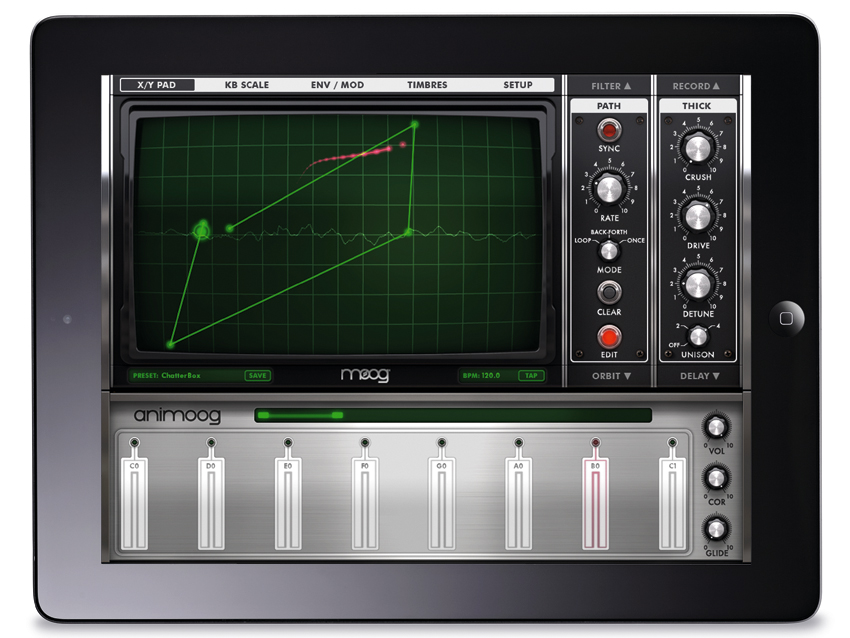MusicRadar Verdict
No longer a bargain, but still a quality product.
Pros
- +
Sounds that live up to the Moog marque.
Cons
- -
For the price, not overflowing with features.
MusicRadar's got your back
Hype can be an amazing thing to behold. Since Animoog's release, we've seen the company make some pretty bold statements, while died‑in-the-wool hardware-heads fall all over themselves to praise the thing.
But, all marketing spiel aside, Moog have delivered a great product.
"The raw samples that make up the timbres are as rich and characterful as you'd expect."
Surprisingly, it takes the form of a wavetable synthesiser, albeit one stuffed with samples from the company's modern and legacy synths. Essentially, there are up to eight timbres that are splayed across an 8x16 X/Y grid. The sound can be made to move dynamically through those timbres each time a note is played.
The raw samples that make up the timbres are as rich and characterful as you'd expect, coming as they did from the company's classic synths and effects. Timbres are easily replaced via a browser that accesses the factory set (there's no user sampling).
The path of travel through the grid is determined by a Path module that offers control over the rate and direction of travel. Clicking Edit facilitates reshaping the path, whileyet more control isprovided by the Orbit module, which enables youto sethow closely thepath isfollowed.
In addition to the Path and Orbit modules, you get a multimode filter with envelope control and drive, along with a resonance circuit that can be pushed into serious squelch. A Thick module provides bitcrushing, overdrive, detune and unison, and there's a delay, too.
Conventional synthesis functions include three ADSR generators, one each dedicated to amp, filter and modulation. There is also an LFO in tow. It's not a lot, but it's more than enough to redefine the sounds to your own liking.
Animoog can be played (and synced) via MIDI (not virtual MIDI) or from the Buchla-esque touch-strip keyboard, which enables you to swipe your fingers vertically as a modulation tool. Your performances can be recorded and overdubbed, while copy and paste is supported as well.
Animoog is a winner. Unfortunately, the crazy 69p introductory price has ended and it now costs a whopping £20.99.
We think this is too much, especially compared to the competition, but it is good fun - plus you can honestly tell your friends that you own a Moog synth! Good stuff.
Computer Music magazine is the world’s best selling publication dedicated solely to making great music with your Mac or PC computer. Each issue it brings its lucky readers the best in cutting-edge tutorials, need-to-know, expert software reviews and even all the tools you actually need to make great music today, courtesy of our legendary CM Plugin Suite.
“I feel like that song had everything we needed to come back with”: Bring Me The Horizon’s Lee Malia on Shadow Moses, its riff and the secrets behind its tone, and why it was the right anthem at the right time
“I said, ‘Are we sure we can write a song about death?’”: The story of Mike + The Mechanics' classic No.1 The Living Years
“Without investment in music education our talent pipeline is at risk of drying up along with the huge opportunities for economic growth it brings”: UK Music draws up five point plan to “turbocharge” music education











